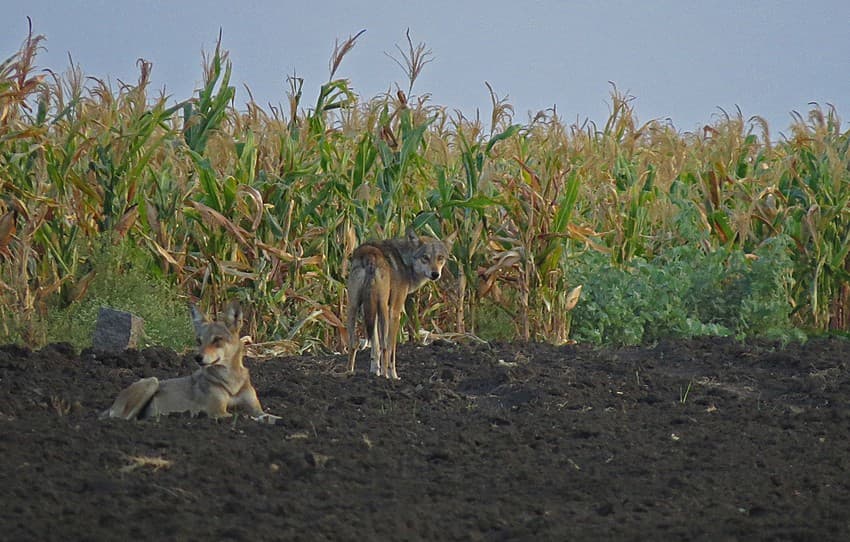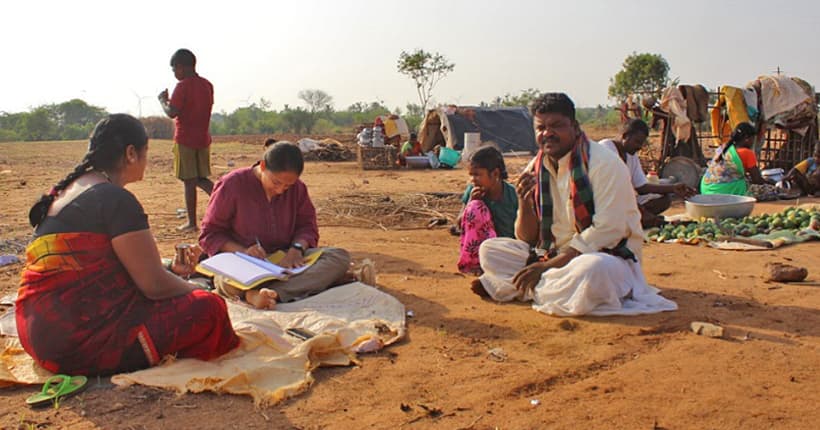Project Title
Assessing Patterns of Livestock Loss Due to Wolves in an Arid Human Use Landscape of North Karnataka, India

Project Grantee
Iravatee Majgaonkar (Alumna of the WCS-India M.Sc. program in Wildlife Biology and Conservation)
Q & A with the Grantee
1) How is your project impacting the conservation of the Indian grey wolf in north Karnataka?
Our findings on livestock losses faced by pastoral groups show that diseases are a bigger cause of worry compared to conflict with large carnivores like wolves. The interviews also uncovered lived realities of land-sharing between livestock owners and carnivores. This helps to shift focus from conflict to other forms of interactions. Our project has created a baseline for future research in the north Karnataka landscape, and helped a local conservation organisation in planning community engagement work which focuses on positive interactions with wildlife.
2) Do share an enlightening experience from your time in the field.
Based on our camera trapping exercises, we gathered that rocky outcrops in agricultural landscapes are refuges for an assemblage of species. Even a few hundred square meters of rocky boulders is akin to a residential complex which allows a diversity of wildlife to persist with cover. Camera traps in a single 100 m. x 100 m. pile of boulders and vegetation recorded jungle cats, jackals, Indian foxes, monitor lizards and Indian Eagle-owl in just a matter of one hour!
3) What does the future look like for the Indian grey wolf and its arid habitat in the human-dominated project area?
North Karnataka is a semi-arid landscape and irrigation facilities haven’t reached all parts of the region. Our camera trapping activities and interviews with shepherds revealed that wolves as well as shepherds, both, are able to use rain-fed areas which offer heterogeneous habitats. Species such as the Indian wolf has a chance to persist if the ecosystem services and biodiversity value of such non-protected regions for pastoralists and wildlife are acknowledged at policy level and in conservation circles. Persistence of wolves in arid human-use habitats will depend on monitoring their populations for disease, survival and their acceptance among people and accordingly develop conservation interventions which do not impinge on people’s rights.

Images courtesy: Iravatee Majgaonkar
Related Links
- Rise in Wildlife Crime: Pandemic’s Intensifying Collateral Damage
- Forests and Wildlife
- 2016 wins the race for – “The Hottest Year on Record”
- Wildlife Week – Unfair Game – Big Cats Lose Prey to Bushmeat Hunters
- The Impact Of One Health On Conservation
- ‘Easy to blame China; but India’s wildlife trade is thriving too’
